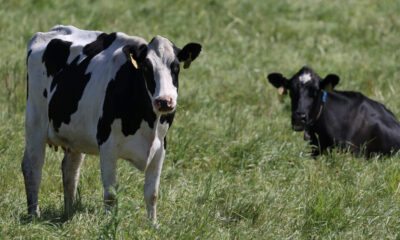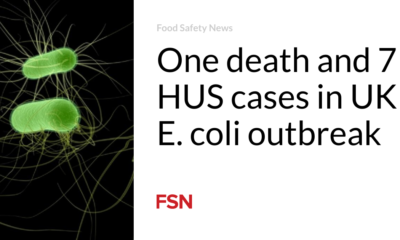Food
Swiss outbreaks remain stable as the number of cases decreases, but the number of deaths increases

According to a recent report, fewer people were sick but more died in outbreaks in Switzerland in 2023, largely due to a Listeria outbreak that killed five.
A total of 40 outbreaks were reported by Swiss authorities in 2023. More than 260 people became ill, at least 40 were hospitalized and six died.
The same number of outbreaks were recorded in 2022. While more than 780 people became ill, only one person died.
Data published by the Federal Food Safety and Veterinary Office (OSAV) and the Federal Office for Public Health (OFSP) showed that the responsible agent was available for 13 outbreaks in 2023. Three were caused by Salmonella and two by norovirus. Histamine, Yersinia enterocolitica, Campylobacter, E. coli, Listeria and an unnamed parasite all caused one. The parasite incident sickened three people and was related to sushi.
Examples of outbreaks
Two people became ill after eating raw tuna tartare at a restaurant. A sample from another batch of tuna showed histamine at a concentration ten times higher than the permitted limit. Inspectors found shortcomings in processes, storage of raw fish and respect for the cold chain.
A group of 26 people suffered from severe diarrhea several hours after eating beef curry in a restaurant. When the remaining curry was analyzed, no pathogens or toxins were found. In June, 24 people, including three staff members at the same hotel, fell ill with symptoms of diarrhea and abdominal pain. Everyone ate the chicken and mushroom stew served in the restaurant. Although leftovers could not be sampled, inspectors found gaps in the cooling and storage processes.
In 2023, 74 Listeria monocytogenes infections were reported, compared to 78 the year before. This was mainly due to a national outbreak with 29 cases, six of which in 2022 and 23 in 2023. Five people died. The report did not reveal the source but said it was identified using whole genome sequencing and investigations were underway.
As in previous years, the highest reporting rate was registered among the age group over 65 years. Of 1,165 tests on cheese, milk and environmental samples, three were positive for Listeria monocytogenes. Other species of Listeria were found in 21 samples.
E. coli, Salmonella and Campylobacter statistics
With 1,224 cases reported in 2023, the increase in the number of Shiga toxin-producing E. coli (STEC) infections has stabilized for the first time in recent years. In 2022, 1,208 cases were registered. The reporting rate is the highest since a reporting requirement was introduced in 1999. The increase is mainly driven by new methods that allow more tests to be carried out, making it more likely that patients will be identified, Swiss officials said.
With 23 reported cases of HUS in 2023, the figures remained comparable to previous years. Six cases occurred in children under 5 years of age and 11 in people over 65 years of age.
For salmonellosis, 1,823 laboratory-confirmed cases were recorded in 2023. This is stable compared to 1,842 infections in the previous year. The top three serovars were the same: Salmonella Enteritidis, followed by Salmonella Typhimurium and monophasic Salmonella Typhimurium.
Switzerland recorded eight patients as part of a multi-country Salmonella Strathcona outbreak with more than 150 cases. Germany had the most cases, followed by Italy. The United States reported eight cases. Of the six people interviewed, all traveled to Europe before becoming ill. Although the source is unknown, it is suspected to be seasonal products such as tomatoes.
Campylobacteriosis was again the most commonly reported pathogen in humans, with 6,756 laboratory-confirmed cases. This is slightly lower than the 7,601 patients last year.
Nearly 1,600 cases were reported in July and August. As in previous years, a second peak was observed during the end-of-year holidays.
Campylobacter counts were greater than 1,000 colony-forming units per gram (CFU/g) in 101 of 821 chicken carcass samples submitted for analysis. Ninety samples had values between 1,000 and 10,000 CFU/g and 11 were above 10,000 CFU/g.
(To sign up for a free subscription to Food Safety News, click here.)











